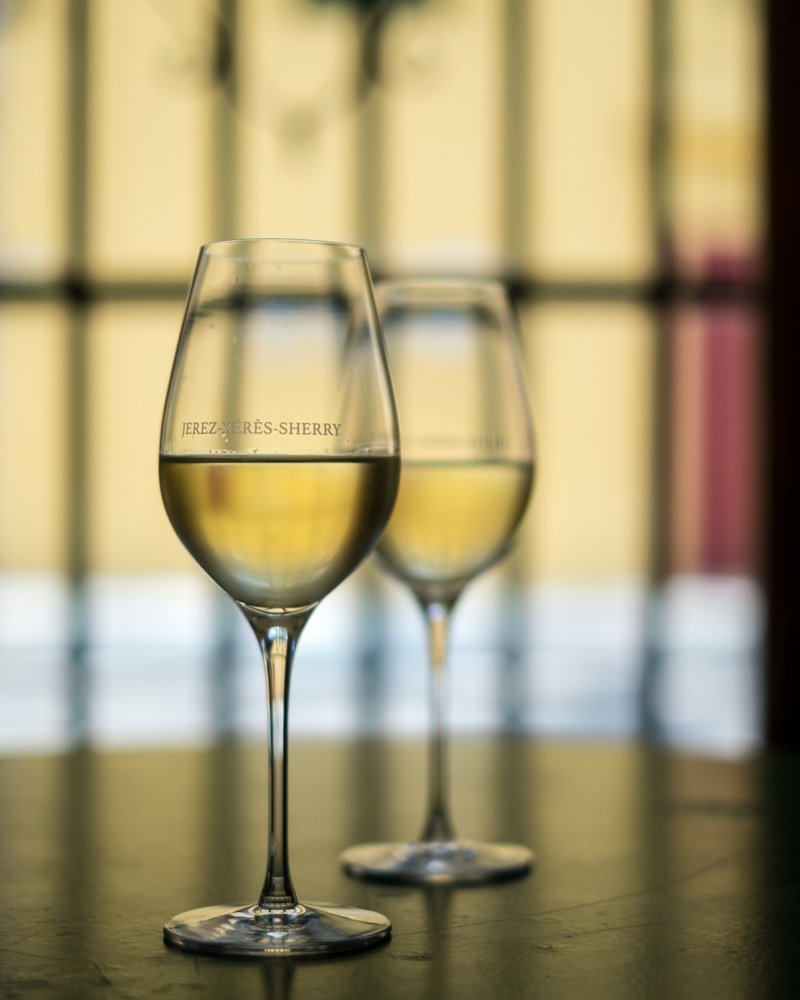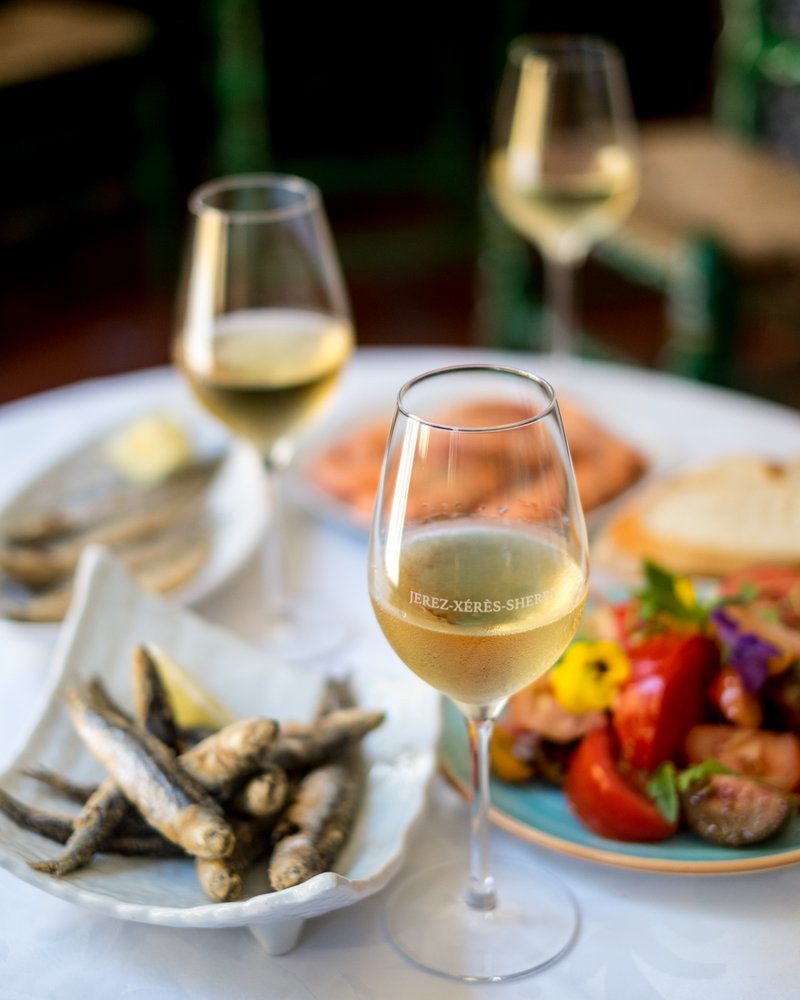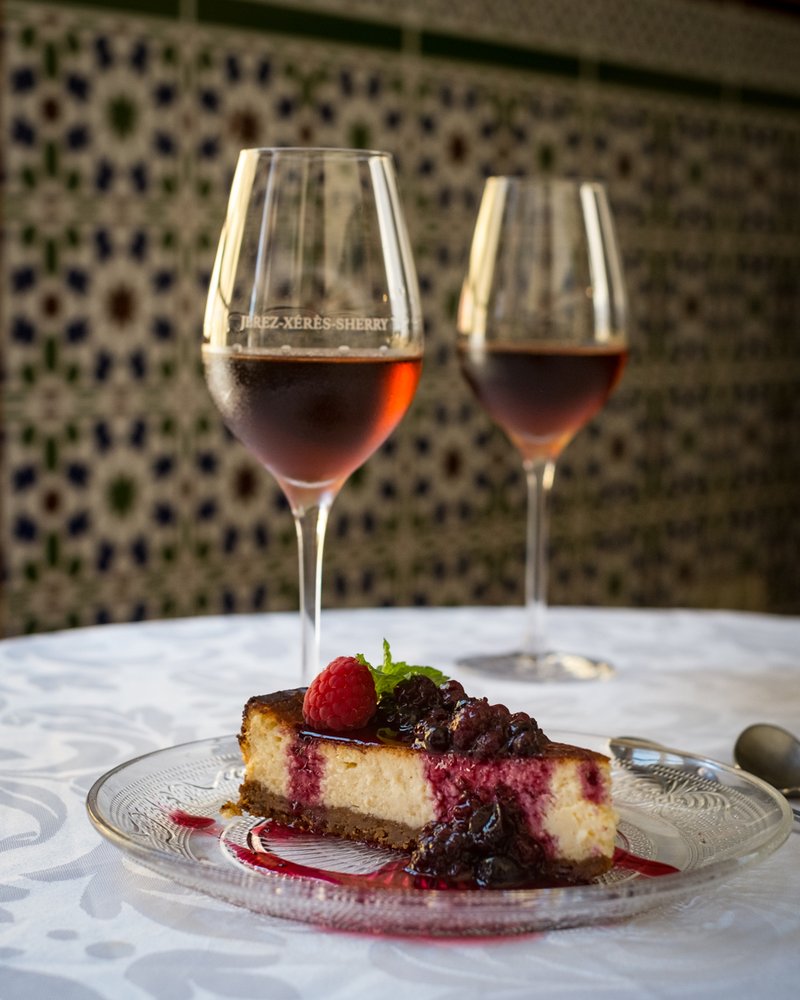Order of service
So the long-awaited day has finally arrived, you are ready to roll and friends are on the way. Much like in the case of other wines, Sherries should typically be served in order of lightest to fullest in body. This suggested approach, which would generally involve moving from light Manzanilla to Fino, and then Amontillado followed by Palo Cortado and finally, Oloroso (the most robust of the dry Sherry styles), helps assess the wines in a progressive and constructive way. Take into account, though, that it all depends on the particular wines involved - some greater bottle-aged or less filtered wines from supposedly lighter styles, would more appropriately be served after a technically fuller wine that has been otherwise heavily filtered. Broadly, younger, easier and less oxidized wines should be served before old, concentrated and complex ones. As for the sweet styles of Sherry, serve them in ascending order of sugar content. While this is of course very subjective, I don’t recommend you to start off your meal with a glass of sun-dried Moscatel!
Glassware

This topic is often misunderstood or even ignored by many wine drinkers - some legendary wines such as champagne, port and Sherry have historically suffered from inappropriate or downright wrong glassware use. A wine glass simply needs to be a tool that effectively fulfils its purpose of allowing the enthusiast to enjoy its content. To appreciate the aromas, any piece of stemware with a relatively generous bowl (say, a standard white wine glass) is my preferred choice for Sherry, but I encourage you to experiment with a variety of options. Poured in different glasses of random shapes and capacities, you may find that each major style of wine responds in a very distinct manner, and that is surely part of wine enjoyment.
In any case, make certain your glassware is both odourless and spotlessly clean before the party starts, as taking these key ceremonial steps seriously should enhance everyone’s experience.
Service temperature
While the temperature at which Sherry Wine is served plays a crucial role in its enjoyment and the overall tasting perception, there should not be strict rules about this. Again, the ideal serving temperature can vary greatly according to personal preference. However, the vast majority of the influential Sherry community more or less agrees on the proper serving temperatures for each of the main styles of wines. I typically like them as follows: Finos and Manzanillas chilled (around 45F), although, as with any good-quality white wine, excessively low temperatures will very likely harm their more delicate hints, and it is also important to note that older and more complex versions of these will benefit from slightly higher temperatures. I enjoy drinking Amontillados, Olorosos and Palo Cortados at around 55F, much higher than that and they will become unbalanced and/or too pungent. I also tend to like the sweet wines rather cool; the younger the PX the colder I normally enjoy it. As you already know, no warm wine is ever good.
Offer as much varied food as possible

I honestly do not think that any other wine region in the world comes close to Sherry’s versatility at the table. The rich diversity of these wines means they can accompany almost any dish. Many experts also believe that Sherry often needs to be paired with food to show its best. Personally, I am not keen on the idea of a wine for dining only versus one suited just for sipping, but I would have to agree in this case – Sherry’s multiple layers of flavor come alive when paired with food. Rather than trying to convince you with just words, I suggest that you and your guests become active participants in this test. Do you cook? If so, terrific; if not, buy as many diverse ingredients as you can think of to try with your Sherries: olives, cured meat, dried fruit and nuts, cheese, shellfish and fish - raw or cooked in any way - canned food in vinaigrette or escabeche, salty food in general, artichokes, asparagus, eggs prepared however you like, soups, white and red meats, poultry, mushrooms, game… a burger or pizza? If that doesn’t sound varied enough, go for Japanese, Chinese, Southeast Asian, Indian cuisines… wait, and don’t forget your best-loved desserts for the sweet wines!
Combining flavours

Regardless of Sherry Wines’ exceptional affinity with food, you might just as well choose to first taste the wines without it. Moving on to pairing, I would always suggest keeping certain ground rules, at least at the beginning. Finos and Manzanillas are well regarded as phenomenal aperitifs, and they can certainly be treated much like white wines - savoury and lively, they will prepare the palate for more robust wines and richer dishes to follow. Amontillados and Palo Cortados, the intermediate styles, should cover a lot of in-between ground. The particularly concentrated Olorosos can definitely replace any full-bodied red wine and so, they may be best enjoyed later on. Clearly (to me), sweeter content wines should be left to last. But that is just the point with Sherry - I never cease to come across wonderful, unexpected marriages involving wine and food. Founded on these basic principles, begin to mix and match. Gradually interchange pleasing combinations by adding some other wine, for example you liked jamón ibérico with Fino? Try it now with dry Oloroso. Or, if oysters with Manzanilla worked fine, why not with an Amontillado? And so on.
Drinking water and drawing conclusions
How are you feeling? Isn’t this how culinary paradise is supposed to taste? You bet! I was lucky enough to be born within a region and family where wine is considered an indisputably essential gastronomic ingredient. I have also had the tremendous honour to work in some of the world’s most highly-acclaimed restaurants at which Sherry was seen as a commodity, heavily stocked and widely offered. Coincidentally, Jerez was the first wine region that I visited professionally more than 15 years ago and I have no doubt that these adventures have made my life more entertaining and rewarding. I sincerely hope that you also find this an enjoyable way to delight your spirit and entertain your friends. As the frenzy simmers down, I would suggest drinking some chilled water (I don’t usually drink water while I eat, but rather before or after), and refocus on your experience.
Canvas your guests’ opinions - if this has been a positive experience, then the final question is: when is the next tasting?
Missed Part 1? Read How to Plan a Sherry Wine Tasting





